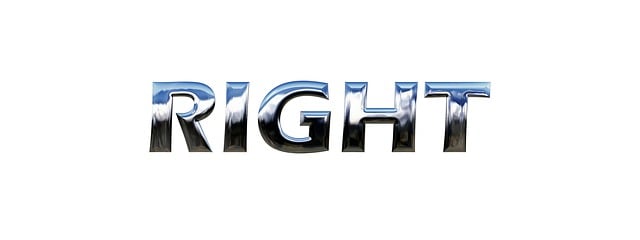To select suitable business insurance, begin by understanding your business's unique needs and risks, including industry regulations, potential hazards, and specific risks like property damage or liability claims. Consult professionals for tailored insights. Evaluate insurance providers, comparing policies and their coverage scope, and assess deductibles and limits based on your business's risk tolerance and financial stability. Regularly review and update your policy to ensure adequate coverage as your business evolves.
Selecting the right business insurance is a vital step in protecting your company’s future. This comprehensive guide will walk you through the essential processes, from identifying unique business needs and assessing risks to researching policies and evaluating providers. Learn how to navigate different coverage options, understand limits and deductibles, consider add-ons, and stay informed by regularly reviewing your policy. Discover the key factors in making an informed decision to safeguard your business.
Understanding Your Business Needs and Risks

To choose the right business insurance, understanding your business needs and risks is paramount. Before shopping for coverage, take a thorough look at your operations, industry regulations, and potential hazards. Identify the unique risks your business faces—from property damage to liability claims—and assess their likelihood and impact. For instance, if you manage a construction site, worker’s compensation and general liability insurance are essential to protect against injury and property damage claims. Conversely, an e-commerce business dealing with sensitive customer data should prioritize cyber liability coverage.
This self-assessment will help you determine the types of insurance needed, their limits, and deductibles. It’s also crucial to consider your business’s growth trajectory, legal obligations, and industry trends. Consulting with professionals—such as brokers or risk management experts—can provide valuable insights tailored to your specific situation, ensuring you make informed decisions when selecting the right business insurance.
Researching Different Types of Business Insurance

Selecting the right business insurance is a crucial step in protecting your venture and ensuring its long-term success. The first step in this process involves thorough research on the different types of insurance available, tailored to meet specific business needs. Understanding what each policy covers and identifying potential risks is essential before making an informed decision.
Business owners should explore options like general liability insurance, which protects against claims of bodily injury or property damage, and professional liability insurance for legal issues arising from professional negligence. Additionally, knowing when to opt for specialized policies like workers’ compensation or business interruption coverage can significantly impact risk management. This research phase empowers business leaders to choose coverage that aligns with their unique operational landscape.
Evaluating Insurance Providers and Policies

Evaluating insurance providers and policies is a critical step in how to choose the right business insurance. Start by researching companies with a strong reputation for reliability and customer service. Check reviews, ask for references, and verify their financial stability through ratings from independent agencies like A.M. Best or Moody’s. Each provider offers distinct coverage options tailored to various industries, so thoroughly review policy details, comparing both the scope of coverage and exclusions.
Consider your business’ unique risks and needs, such as property damage, liability claims, and cyber threats. Seek clarification on deductibles, limits, and any additional costs or requirements. Speak with agents directly for personalized advice and to better understand how different policies align with your business goals. Don’t be afraid to shop around for the best combination of coverage, price, and service that meets your specific needs.
Assessing Coverage Limits and Deductibles

When evaluating business insurance, understanding coverage limits and deductibles is a crucial step in choosing the right policy for your needs. These components play a significant role in determining the level of protection your business receives against potential risks and financial losses.
To effectively assess these factors, start by evaluating the maximum amounts covered under each policy category. Consider your business’s unique requirements and historical loss data to gauge appropriate limits. Additionally, deductibles represent the amount you’ll pay out-of-pocket before insurance coverage kicks in. Opting for a higher deductible can lead to lower premiums but requires a solid financial buffer. Evaluate your cash flow and risk tolerance to decide on deductibles that align with your business’s resilience and financial stability.
Considering Additional Rides and Amendments

When considering business insurance, don’t overlook the importance of additional rides and amendments. These components can significantly tailor your policy to align with your unique operational needs, ensuring comprehensive protection. Understanding how to choose the right business insurance involves evaluating potential risks specific to your industry and day-to-day activities.
For instance, if your business frequently transports goods or people, adding liability coverage for additional rides is crucial. Similarly, amendments allow you to customize your policy by including or excluding specific perils, ensuring you’re not paying for unnecessary protections while remaining guarded against likely risks. This thoughtful approach to selecting business insurance guarantees that your operations remain safeguarded without overspending on irrelevant clauses.
Regularly Reviewing and Updating Your Policy

Regularly reviewing and updating your business insurance policy is a crucial aspect of how to choose the right coverage for your company. As your business evolves, so do its risks and responsibilities. Therefore, it’s essential to reassess your insurance needs at least annually or whenever there are significant changes in your operations, such as expanding into new markets, introducing new products, or making structural changes to your facility.
During these reviews, compare your current policy against the ever-changing market offerings. Evaluate whether you still require the same level of coverage and if any new risks have emerged that need addressing. Staying proactive ensures you maintain adequate protection for your business assets and peace of mind.
